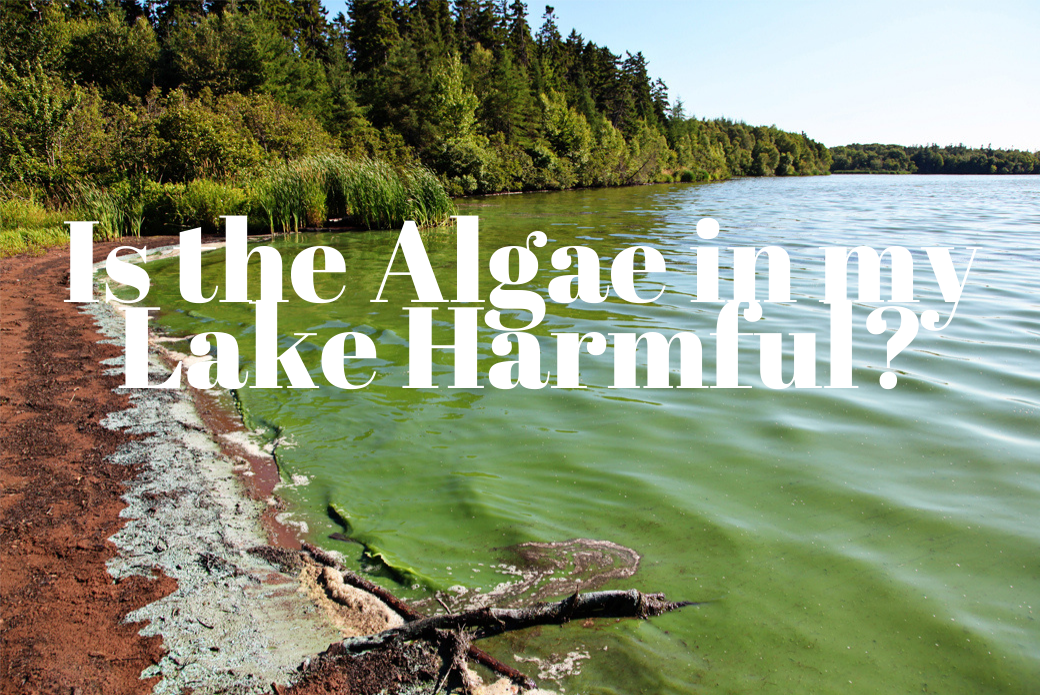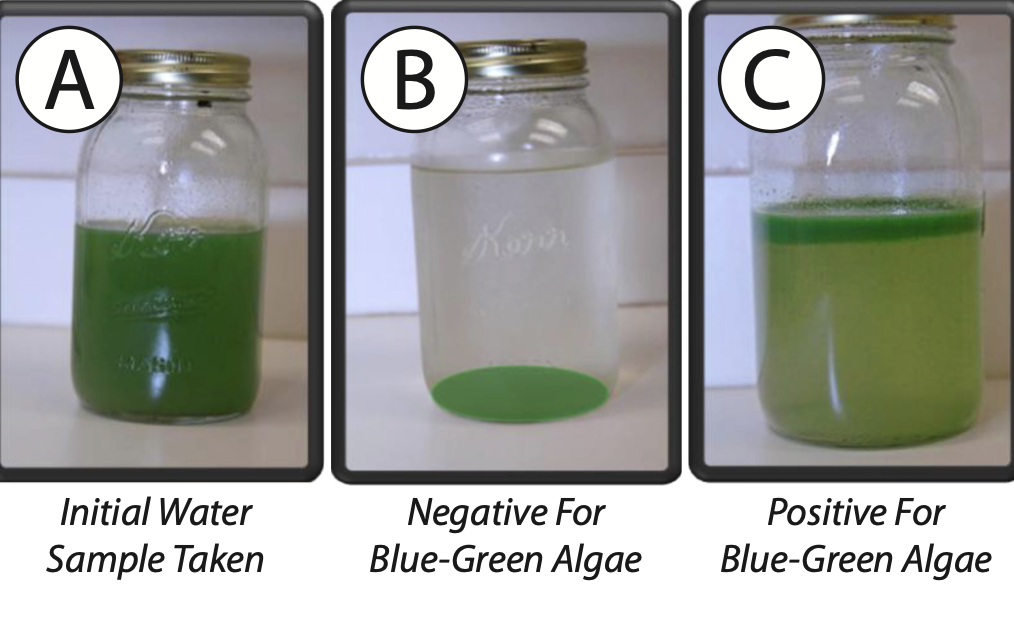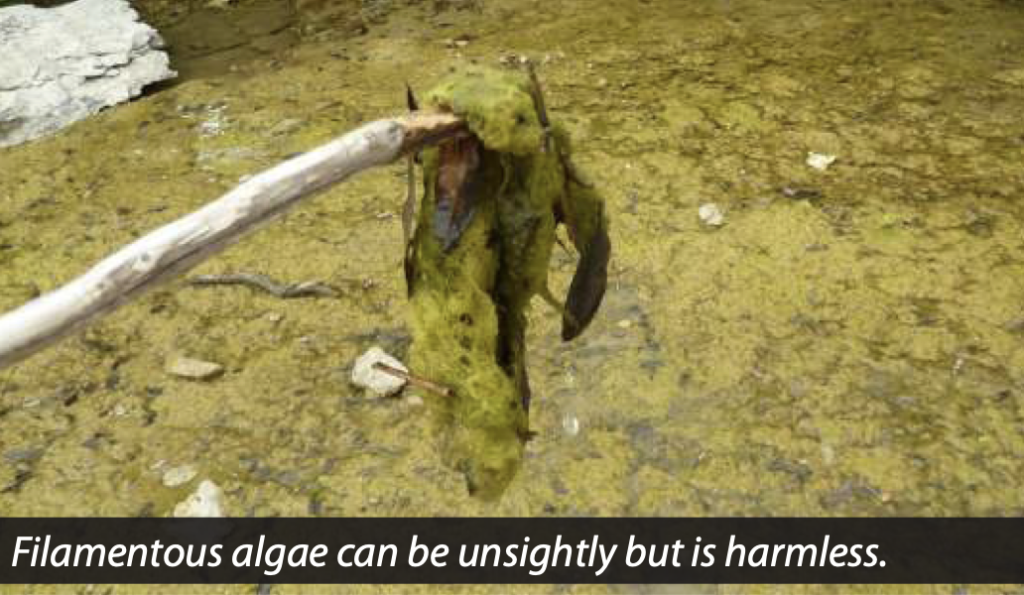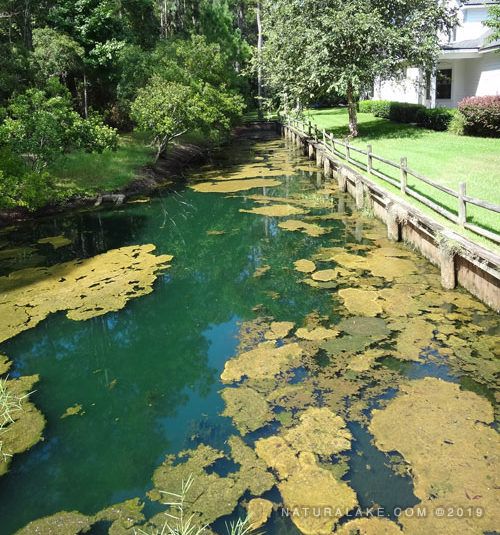
There are a couple simple no-cost tests lake residents can do to determine if “green looking” algae is from toxic blue-green algae (cyanobacteria) blooms or non-toxic filamentous green algae.
Cyanobacteria, also known as blue-green algae, are photosynthetic, organisms naturally found in water bodies. Blue-green algae can proliferate and ‘bloom’ very quickly in response to warm temperatures, sunlight and high levels of nutrients. Algal blooms can deplete the oxygen and block sunlight to other organisms, and some can produce powerful toxins that are capable of causing illness and even death to wildlife, livestock, pets and even people.

How to test:
There are two simple tests you can do to check for blue-green algae…with the materials already in your home!
The Jar Test

Materials:
- Clear pint to quart size jar with a screw top lid such as a canning jar or pickle jar with label removed
- Rubber or latex gloves
Procedure:
- With the gloves on, collect a sample just below the surface of the water (avoid collecting just the top layer of scum.
- Fill the jar about three-quarters full. Do not fill the jar completely; algae give off gases that may cause pressure buildup in the jar that could break it.
- Wipe any scum off the outside of the jar and screw the lid on.
- Put the jar in the refrigerator and leave it undisturbed overnight.
- Carefully remove the jar from the refrigerator and see where the algae has accumulated. Do not shake or agitate the jar at all or the algae will mix into the water again and negate your test results.
- If the algae are settled out near the bottom of the jar, it is likely that your lake does not have a lot of blue-green algae.
- If the algae have formed a green ring at the top of the water, there is a strong possibility that your lake does have a blue-green algae community.
The Stick Test

Materials:
- Sturdy stick, long enough to reach into the water without getting algae on your hands.
- Rubber or latex gloves
Procedure:
- With the gloves on, push the stick into the surface mat and slowly lift it out of the water.
- If the stick comes out looking like it has been dipped into a can of paint, the material is likely blue-green algae.
- If the stick comes out with green strands like hair or threads, the material is probably filamentous green algae, which may be a nuisance but is not a health hazard.
NOTE: The stick test can fail when a type of blue-green algae called Lyngbya wollei is present. This species can form tough filamentous mats that float to the surface, similar to mats formed by harmless filamentoursalgae. But Lyngbya wollei algae differentiate themselves with a putrid sewage-like odor and by sometimes releasing purple pigment in the water around them.

If you suspect that there is blue-green algae in your lake, be sure to contact your local board of health or the health department to alert them what you have observed and be sure to include the name and location of the waterbody. Take the precautions to make sure you, your friends, family, and pets stay safe this summer at your new lake home!
Posted by Scott Freerksen “The Lake Guy”
